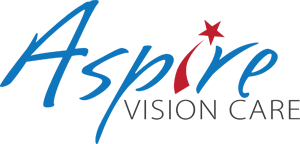 Visual problems in autistic children commonly go undetected and untreated. Often mistaken for symptoms of autism, visual problems can make it much more difficult for individuals with autism to process what they are seeing.
Visual problems in autistic children commonly go undetected and untreated. Often mistaken for symptoms of autism, visual problems can make it much more difficult for individuals with autism to process what they are seeing.
In a 2019 review of eye clinic records, the Journal of the American Association for Pediatric Ophthalmology and Strabismus found that many autistic children have undetected vision problems.
“Among 2,555 children at a university autism clinic, about 11% had significant vision disorders, including strabismus (eye misalignment) and amblyopia, in which poor vision in one or both eyes results from abnormal early visual development,” the researchers said.
Vision Problems and Autistic Behaviors
Though many of the following autistic behaviors may appear to be unrelated to vision impairment, in reality, a high number of them are due to poor vision or visual skills.
- Light sensitivity
- Amblyopia/lazy eye
- Lack of reciprocal play
- Eye alignment (eye turns)
- Common eye-rolling
- Looking through/beyond objects
- Difficulty accurately tracking moving objects
- Inability to maintain eye contact with people
- Visual stimming (flapping fingers in front of eyes)
- Looking at objects from the side of the eyes
- Extreme fear or absence of fear of heights
Vision Therapy for Children with Autism
Vision therapy is a proven treatment that strengthens the neurological connections between the brain and eyes to improve visual abilities.
A vision therapy program for an autistic child will help them improve visual processing, which in turn, will help them better understand their surroundings and improve associated behaviors, like anxiety.
Each vision therapy program is tailored to the child's specific needs and includes age-appropriate exercises and activities.
Vision therapy tends to focus on improving the following skills in autistic kids:
- Central vision
- Peripheral stability
- Efficient eye coordination
- Visual-spatial organization
- Visual information processing
Yoked or ambient prisms
Vision problems, particularly visual-spatial misperceptions such as bodies/objects/people moving in space, can make an autistic child feel frightened, confused or distressed, leading to certain behavioral responses like poor eye contact or looking beyond an object.
Yoked or ambient prism lenses assist autistic children in making better use of their vision. Prisms can enhance posture, balance, and attention almost immediately, thus considerably boosting the child's sense of physical safety and comfort while reducing anxiety and sensory overload.
Prism lenses can be worn on a daily basis or for the duration of a vision therapy program, which generally leads to significant improvements.
The purpose of vision therapy is to make ordinary tasks easier to complete and reduce the challenges that both you and your autistic child confront on a daily basis.
Please note that vision therapy should be a part of an interdisciplinary strategy aimed at improving a patient's capacity to function and enhance their quality of life.
Aspire Vision Care serves patients from Round Rock, TX, Pflugerville, Cedar Park, and Georgetown, Texas and surrounding communities.
Q: How long does vision therapy take to work?
- A: Although it varies from person to person, most children will see a difference within the first 10 weeks. Adult vision therapy takes a little longer because adult brains are less flexible than children's brains.
Q: What is vision therapy?
- A: Vision therapy is a specific program that involves a series of progressive therapeutic eye exercises that help patients improve their visual abilities. Their visual abilities improve as their eyes and brain communicate more effectively. It's a one-of-a-kind, treatment program that's usually combined with vision correction (glasses or contacts, such as in the case of myopia or presbyopia).

